The gala banquets of royalty always give the public an opportunity to see members of the royal family in their mesmerizing gowns and stunning tiaras. And Queen Margrethe II's gala dinner at Christianborg Palace did not disappoint.
The gala banquet capped the Queen's weekend celebration for her Golden Jubilee, although it was a scaled-down affair, the royals still looked glamorous in their finest jewelry and royal regalia.
The Danish monarch, 82, decided to modify the weekend events for her Jubilee celebration, even scrapping the balcony appearance and the horse-drawn carriage, to pay respect to her third cousin, Queen Elizabeth II, who died on September 8, Thursday, at the age of 96.
The gala performance at Royal Theater, church service, and luncheon aboard the royal yacht Dannebrog went ahead as scheduled but with less fanfare.
The Gala Banquet at Christianborg Palace
The gala banquet was also called the “collar” dinner because members of the Order of the Elephant, Denmark’s highest order of chivalry, wore the collar and the elephant badge to the event.
Royals and guests were guided to the Hall of the Knights of the Christianborg Palace. After greetings the guests, the Queen delivered a Speech:
When I welcome you this evening to this gala table at Christiansborg, it is not without sadness. On Thursday, September 8, Queen Elizabeth II of Great Britain passed away. It makes a big impression on us. I would therefore like to ask everyone to stand and with me observe a minute’s silence in respect of Queen Elizabeth and her long work.
(One minute silence) — THANK YOU
In this room, we are surrounded by Denmark’s history depicted in festive colors based on the many regents, famous as well as overlooked, who have stood for our country for more than a thousand years.
In pleasure and in need, in prosperity as well as adversity, they have taken on the duty and the challenge which has at all times become their and Denmark’s destiny.
It has now been 50 years since I joined this long line – with the same commitment and to the same responsibility – but I have always felt a sincere joy and gratitude at my deed, supported by the entire Danish people, the Faroese people and of the Greenlandic people.
I was not born for this role. My world and my future changed course with the constitutional amendment in 1953. In my young years, it was my father, King Frederik, who always supported me and believed that I would probably make it when that day came. In the following many years, my husband Prince Henrik stood by my side – with love and support. I also had the pleasure for more than 25 years of having my mother, Queen Ingrid, as an inspiration and example.
Frederik and Mary, Joachim and Marie! The four of you are my constant support and joy both here at home and abroad, with everything that happens to you and in everything that you do, and as the good and loving parents of my eight grandchildren. Today, a big thank you must be said for your responsible and diligent efforts.
Christiansborg is the seat of the Government and Folketing and of the country’s highest court, the Supreme Court. The close cooperation throughout all these years has always been based on trust and characterized by mutual respect, and therefore it is on my mind at this gala dinner to be able to express my heartfelt thanks.
No nation in the world is as close to each other as the Nordics. That is why I have been looking forward to welcoming King Carl Gustaf and Queen Silvia of Sweden, to King Harald and Queen Sonja of Norway, to Finland’s President Sauli Niinistö and Mrs. Jenni Haukio and to Iceland’s President Guðni Jóhannesson and Mrs. Eliza Reid.
There are many of us gathered here in the Riddersalen at Christiansborg. My welcome extends to all, both here and beyond the whole country, indeed throughout the kingdom, with my sincere thanks for the warm attention which I have experienced, not only in connection with my jubilee but also during all these years.
A warm welcome to all!
The Royal Glamour at the Gala Banquet
Queen Margrethe II looked resplendent in her velvet blue gown, reportedly from designer Birgitte Thaulow. It is a shimmering velvet, fit for the Queen.
Her Majesty the Queen shines in a stunning blue velvet dress
The dress featured a flattering square neckline and long sleeve, and the material gathered in the middle of the dress, cinching Margrethe in at the waist.
Queen Margrethe's favorite head sparkler, the Pearl Poire Tiara
The Queen donned her favorite tiara, the Pearl Poiré Tiara, which has a matching necklace and earrings set. This tiara, which Queen Margrethe often wore during official portraits and state occasions, is one of her most prized jewelry collections, dating back to the early 19th century.
Its original owner reportedly was the Queen's ancestor, Princess Louise of Prussia, who married Prince Frederick of The Netherlands.
This tiara is comprised of diamonds and extravagant pieces of large pearls. It's one of the grandest of all tiaras in the Danish royal jewelry vault. And worn exclusively by the Queen.
Queen Silvia and King Carl XVI Gustaf
Queen Silvia of Sweden also wore a stunning blue gown with a slit on one leg. She was also clutching a clam silver purse during the event.
The Queen donned one of her go-to tiaras in the Swedish royal jewelry collection, the Nine Prong Tiara. It is sometimes called Queen Sophia's Diamond Tiara (named after its first owner, Queen Sophia of Sweden, the wife of King Oscar II of Sweden).
It is called by such name, Nine Prong, due to its pointed design made of diamonds. The prongs are arranged in a sunburst-type motif that terminates in nine graduated prongs.
Queen Silvia and King Carl XVI Gustaf
Queen Sonja of Norway was equally glamorous with her buttercup yellow dress. Although a bit mismatched to the choice of her emerald tiara. Queen Sonja's dress at the gala performance the night before was more gorgeous.
During the gala banquet, the Norwegian Queen Consort donned the Leuchtenberg Emerald Parure tiara, her most favorite among all the tiaras in the Norwegian tiara collection.
King Harald V and Queen Sonja of Norway
This tiara has a unique history. Originally owned by Princess Augusta of Bavaria, Duchess of Leuchtenberg (where the tiara got its name), it traveled to Sweden when it was inherited by one of her daughters, Josephine, the wife of King Oscar I of Sweden.
King Harald V and Queen Sonja of Norway
The tiara was eventually inherited by one of her great-granddaughters, Princess Martha of Sweden, who married Crown Prince Olaf of Norway, and later King Olaf V of Norway, the father of King Harald V.
Princess Marie and Prince Joachim
Princess Marie, the wife of Prince Joachim, wore a light yellow gown with feathers on the elbows. She looked so stunning in this dress because it matches the collar of the Order of Elephant in gold.
Princess Marie wore her wedding headpiece, the Princess Dagmar Floral Tiara
Princess Marie wore her wedding tiara, the Princess Dagmar Floral Tiara. It's a bit interesting to share the history of this tiara. It's made of diamonds arranged in floral form and originally owned by Princess Dagmar of Denmark, the youngest daughter of King Frederik VIII. She was also the sister of King Christian X of Denmark, King Haakon VII of Norway, and Princess Ingeborg who married Prince Carl of Sweden.
Princess Dagmar married a German count and had five children together, surprisingly, she bequeathed her tiara to her nephew, King Frederik IX of Denmark instead to her daughters.
Princess Marie and Prince Joachim
Queen Margrethe II eventually inherited the tiara from her father and had worn it many times before she loaned it to the second wife of her youngest son. So it means Princess Marie is exclusively the current wearer of this tiara.
However, it is only a loan from Her Majesty and not a wedding gift. It will return to the royal jewelry vault upon her departure (in case) from the Danish royal family.
Among the tiaras worn during the gala banquet, only Princess Benedikte repeated a tiara from the gala performance appearance from the night before. Princess Benedikte only wore one tiara during the weekend celebration, the Sayn-Wittgenstein-Berleburg Fringe Tiara, a family heirloom from her husband's princely family. Her husband, Prince Richard, died in 2017.
Princess Benedikte and her younger sister, Queen Anne-Marie
The tiara was originally made for her husband's grandfather, also named Prince Richard, in 1905. And was inherited by Princess Benedikte's husband in 1976. This tiara is convertible as it can also be worn as a necklace.
Queen Anne-Marie wore a Greek emerald parure tiara
The youngest of the Danish royal sisters, Queen Anne-Marie of Greece, who wore a stunning green dress, donned the Queen Elisabeth Emerald Parure tiara, also known as the Greek emerald tiara.
The history of this tiara is equally interesting as the other historic tiaras worn by royals during the event. This particular tiara of Queen Anne Marie is a Greek royal family heirloom.
The tiara was made from the cabochon emeralds brought by Queen Olga of Greece, born Grand Duchess Olga Konstantinovna of Russia, from Russia when she married King George I of Greece.
She stated in her will that all her jewelry and the emeralds must be passed to the next Greek king. Her eldest son, Constantine I, predeceased her, so her jewelry possessions went to Constantine I's second son who became King George II.
George II married her second cousin, Princess Elisabeth of Romania, and it was her who turned the Cabochon emeralds into a tiara, to honor the heritage of her maternal grandmother (Grand Duchess Maria Alexandrovna of Russia), and grandmother-in-law (Queen Olga), she instructed to design the tiara in a kokoshnik form.
The tiara passed to the Greek kings which eventually worn by their respective wives. The last Greek Queen Consort is Anne-Marie, which explains why the tiara is in her possession now.
Crown Princess Mary recycled her Jesper Hovring light brown gown and added a black lace detail that matches her lacey designed pumps from Gianvito Rossi.
She also wore her favorite tiara, the Ruby Parure Tiara, which she used on official portrait photoshoot and other important royal occasions.
Crown Princess Mary's Ruby Parure is a Danish royal family that originally belonged to Queen Desideria of Sweden. It came to the Danish royal family when Princess Louise or Lovisa of Sweden married the future King Frederik VIII of Denmark.
Crown Prince Frederik and Crown Princess Mary
This tiara was permanently loaned by Queen Margrethe to Mary after her wedding to Crown Prince Frederik of Denmark in May 2004. Mary made some adjustments to the tiara to fit her head by adding some clips.
Crown Prince Frederik and Crown Princess Mary
Queen Margrethe II's first cousin, Count Ingolf of Rosenborg, and his wife, Countess Sussie of Rosenborg, also attended the gala banquet. The countess wore an off-the-shoulder pink satin dress and Queen Alexandrine Fringe Tiara, a family heirloom that belonged to Ingolf and Margrethe's grandmother, Queen Alexandrine.
Count Ingolf and Countess Sussie of Rosenborg
Count Ingolf, who was born Prince Ingolf of Denmark, was stripped of his royal title when he married without seeking his uncle (Frederick IX) and the Council's approval, which he did not ask for because he was marrying a commoner and at that time King Frederik IX never granted approval to a royal marrying a commoner.
Ingolf was made a Count of Rosenborg. Sussie is his second wife but no children from either of his two marriages. He is a working Danish royal and received allowances from the state but he is not in the line of succession to the Danish throne.
Following the death of Queen Elizabeth II, Queen Margrethe II of Denmark is the only reigning Queen in the world today and the longest-reigning monarch in Europe.
She ascended the Danish throne in January 1972 on the death of her father, Frederik IX. The second longest-reigning monarch in Europe is her first cousin, King Carl XVI Gustaf, reigning since 1973.


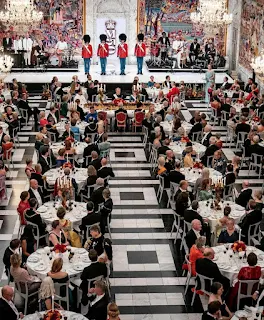

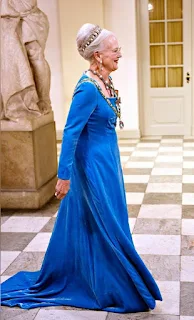

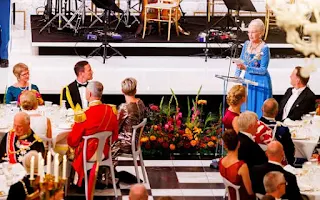


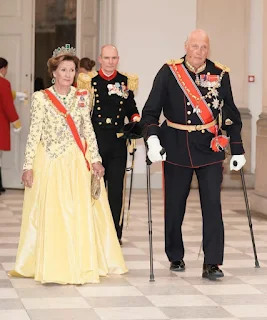

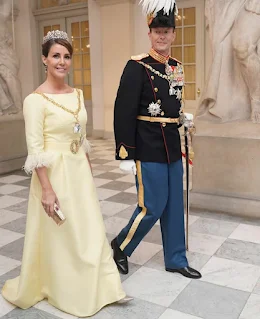
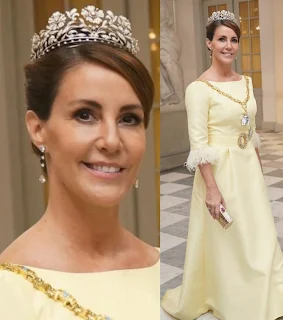


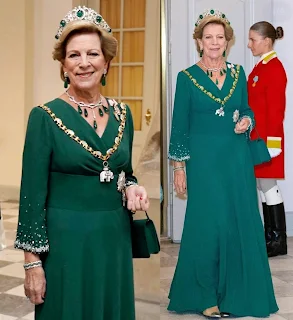




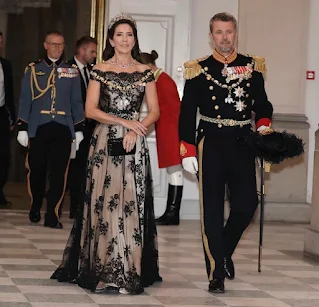







0 Comments